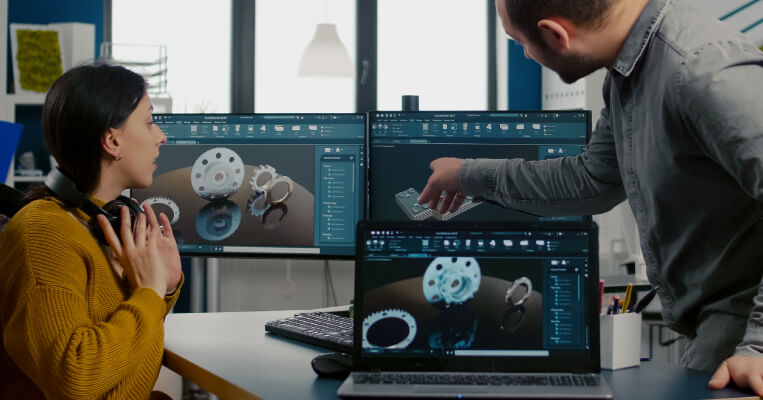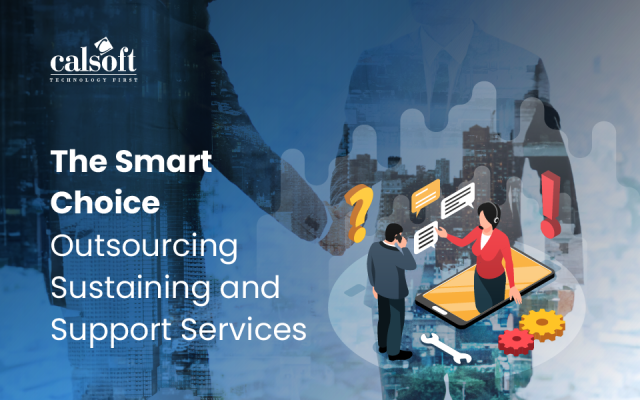Cultivating a strong relationship with the ideal technology partner is a self-help investment with the potential for high returns. Such relationships evolve gradually. After all, it takes patience, passion, understanding, and collaboration to be an active participant in the evolution of any brand’s story. But such strong bonds effectively translate to a better alignment of strategic priorities and guarantee mutual success.
An ISV’s success in creating such an association could help add muscle as well as an invaluable jolt of energy to strategies. The ISV could potentially carve out a profitable and sustainable business niche for itself and even become a thought leader with the added support.
The first pitfall in making such a partnership workable is the ability to recognize an organization as a long-term product development partner — one with which an ISV could collaborate on multiple projects across diverse technologies and projects over several years.
To that end, how exactly should an ISV perceive and identify a potential partner in the realm of product development? Let’s find out.
1. A Granular Assimilation
First off, the product development partner should have the potential to be an integral part of the team. What does this entail?
Well, the fundamental difference between this model and the typical technology-enabled outsourcing arrangement is that the ISV’s contract or proposal is not just about how to get a given technical requirement implemented. It’s about how an ISV would excel in helping the ISV bring a compelling solution to the market. The approach may require working together during pre-implementation analysis, system design, prototype development, early market feedback, and usability testing. Even if the partner isn’t required to deliver services in each of those areas, the ability to understand each of them in the context of how products are built is crucial. This is where domain knowledge plays a crucial role. A deep understanding of the technology space, the product landscape, and the evolutionary roadmap can’t be taught. It must be inherent in the potential partner.
On a granular level, the idea is to:
- Recognize the need for such a relationship over the long term.
- Have a collective understanding of how product design and development will evolve together over the forthcoming period, while also being open to changing technologies.
- Be resourceful enough to garner support for creatively negotiating complex technical issues across the C-suite
2. A Profoundly Complementary Relationship
After the ISV and technology partner begin working together, the arrangement will only work over the long term if they’re essentially complementary— two parts that can amplify each other’s strengths and complement each other’s weaknesses.
Besides, for the ISV to perceive the technology partner as a long-term product development partner, the latter must exhibit a strong common value system. This could come in the form of obvious alignment with core functionalities, expertise, or culture, or an amalgamation of its own organization’s strengths and weaknesses in alignment with the ISV’s organizational sensibilities.
A case in point could be the technology partner’s product development ethos, which could be very much in sync with the ISV’s product sensibilities. As a result, both parties would understand development cycles, go-to-market strategies, release plans, and other key decision points.
3. An Exhibition of Predictability and Transparency
Stability in the relationship between the technology partner and ISV demands a strong commitment to predictability and transparency. This means that the product development partner must follow through on its commitments, communicate consistently, and at whatever pace is needed. It also means that the two organizations:
- Are honest with each other about issues of mutual interest
- Share knowledge of underlying processes, methodology, tools, methods, et al.
- Talk terms and conditions before executing any of their transactions
- Proactively communicate on the scheduling of time, quality of work, etc.
From a core business perspective, all these facets might sound cliched; however, clear articulation and the subsequent leveraging of the customer journey entails having them intact — something only a meaningful long-term partnership could realistically help realize.
4. An Accelerator of Innovation, Continuous Improvement, and Problem-solving
From intellectually stimulating conversations and aligned work culture to the availability of an engineering team that is technically competent and spurred by creative thinking, the end game is to collaborate with a product development partner that significantly reduces an ISV’s overall risk and fosters accelerated innovation. That could potentially take the relationship above and beyond what it would be in a typical outsourcing arrangement.
As far as the latter is concerned, in particular, this means:
- Identifying and addressing challenges through well-planned discussions.
- Addressing pertinent analytical challenges by allocating adequate time for analysis.
- Working through each sub-component of the project right from the conceptualization stage to the development stage
From an operational standpoint, if an ISV can take these steps with a technology partner that has a proven track record, it could significantly reduce the lead time for repeatable successes. It could also ensure that efficiency is maximized by minimizing unnecessary prototypes and accelerating high-value phases in product development.
Summing Up
Though the long-term benefits are substantial, planning for this type of alliance requires a genuine sense of purpose. As such, the recognition of an ideal product development partner rests on:
- An appreciation of the mutual value of long-term collaboration.
- The proven ability to work together in a partnership-driven manner
- The conviction that it’s still possible to excel when working outside the normal boundaries that are often prescribed by traditional outsourcing arrangements
- The technical competence needed to explore the hierarchical intricacies as the scale of the offering
- And proven reliability and nimbleness in navigating past roadblocks that tend overwhelming many ISVs
In general, the partnership model can be one with great benefits to both sides.







